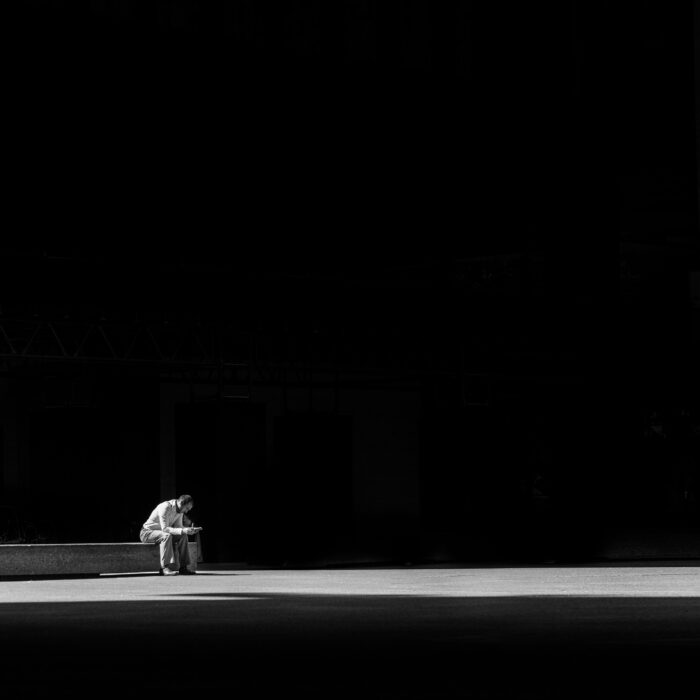You have no items in your cart. Want to get some nice things?
Go shoppingIt was in an unexpected place that I found the biographical subject I’d been looking for as a means of escaping, at least temporarily, the academic literary criticism I’d been writing for twenty years or more. In place of weighing the creativity of others, I’d wanted by the early 1990s to re-create some deserving life that permitted some celebration, even some passion, in its re-creation. I had naturally assumed my subject would be human, most likely a writer, but no one had brazened herself to the front of the queue.
But after all, the flamboyant John James Audubon, the 19th-century American woodsman, naturalist and painter, had called his life-histories of American birds Ornithological Biography (1839). His species were alive and well and plentiful and to Audubon, who shot birds copiously both for the larder and the studio, North America must have seemed a static natural plenitude. But in truth, his species’ lives were in flux – either vulnerable to change or happily adaptable to it.
I myself have been an amateur bird-watcher for long enough to see changes in life-history (in behaviour, population and distribution) in action. It has been over fifteen years since I heard a cuckoo in Northern Ireland, longer since a corncrake craked within earshot. More than ten years since I caught sight of, much less heard with inspiring pleasure, a skylark.
On the other hand, in my boyhood in Belfast I had to go to its leafy outskirts to see a hooded crow, wood pigeon or even magpie; now they are citizens, habitués of garden, avenue and even street and verging on becoming pests. As I write, fifteen to twenty lesser black-backed gulls are wheeling and hoarsely jeering just above me in a suburban street in July. Once more gracious visitants to the estuaries, they have become noisy scavenging urbanites and I wonder if they ever bother now to flap and glide a mile or so to the river Lagan or a little further to Belfast Lough. Now that my town flat is at chimney-pot level, I watch the gulls stake out their strange little territories – the earthenware stacks from which the roofs, they must think, have been mysteriously eroded.
Some changes have been almost sudden. The song thrush, until yesterday a ubiquitous hunter on the lawn, seems to be merely holding on by its claws. Likewise the house sparrow, the eaves emptied of them. The greenfinch has all but disappeared from woods and gardens alike. But it has been replaced many times over by the goldfinch, now a suburbanite and loyal visitor to the bird feeder. Who would have thought that this beauty of a songster, once synonymous with whin, hedgerow and thistly wastes, would have deigned to invade our intimate domestic spaces?
But where are the ragged flocks of lapwings in slow-mo flight that a mere decade ago were hundreds strong on Strangford Lough south of Belfast? One inadequate consolation is the sight of small rafts of splendid eider ducks, up to seventy strong, far up the Lough towards the floodgates at Newtownards, once frequenters only of the broken Irish Sea coastline twenty miles to the south.
The author of the book in which I found my biographical subject was alive to such ebb and flow in nature. But as his Birds of Canada (1934) makes clear, Percy Taverner also knew that sometimes it became ebbtide without flow, as with the Labrador duck or the great auk. These lives were ended. Perhaps biographies of the dead are more satisfying for there is beginning, middle and end. But in ornithology, the bird biography is usually the monograph, the study of a species without reference to its numbers – David Lack’s wonderful wartime, and often reprinted study, The Life of the Robin (1943), where “the life” means “the way of life”. (Though as the author of The Natural Regulation of Animals Numbers (1954), Lack too knew about death as well as life.) Or The Wren (1955) by Edward A. Armstrong, the Northern Irish clergyman, naturalist, folklorist and Shakespeare scholar, a marvellous writer who produced one of the most beautiful of ornithological memoirs, Birds of the Grey Wind (1940).
However, it was the way of death, and Taverner’s eloquent obituary for a species, that made its immediate mark on me in a friend’s kitchen in Vancouver as I leafed through Birds of Canada. My friend and I were used to the teeming birdlife of the Fraser River delta in British Columbia, where one could see tens of thousands of wintering snow geese, a dozen or more snowy owls in unpredictable winters, eleven species of raptors on a given day, waders and ducks unlimited. I happened upon his entry for the passenger pigeon (Ectopistes migratorius). It had once been numerous in Canada and the United States beyond all but the most reckless computation. Its nestings were of astounding magnitude and became the raison d’etre of an entire industry that involved pigeon hunters (pigeoners), agents, meat-packers, railroad schedules, butchers’ shops, and customers.
The unnatural regulation of animal numbers, you might say. Taverner writes: “The last great rookery was near Petoskey, Mich. In the autumn of 1878 the birds left on their usual migration, but failed to return in commercial numbers the following spring.” This is the sentence that struck me, setting as it does an extraordinary puzzle. His 1934 entry ends: “Even yet rumours and circumstantial accounts of Passenger Pigeons still extant appear from time to time, vouched for by those who remember the bird in their childhood, but there is little doubt that the species is extinct.”
I knew then I had my biographical subject though it waited years to be honoured. The passenger pigeon died out in the wild around 1900 and the last one on earth died in the fateful September of 1914. No human life could have been neater in scope or more meaningful, or sadder.

About John Foster
John Wilson Foster spent his academic career at the University of British Columbia (Vancouver) and is now a freelance writer and scholar in Belfast. He writes on Irish and British literature, natural history and culture. His most recent books include Nature in Ireland (ed. 1997), Titanic (ed. 1999), Irish Novels 1890-1940 (2008) and Between Shadows (2009). A dramatic monologue, A Better Boy, has been recently performed in Belfast, Brussels and Paris. Pilgrims of the Air, the story of the passenger pigeon, was published by Notting Hill Editions in 2014.




